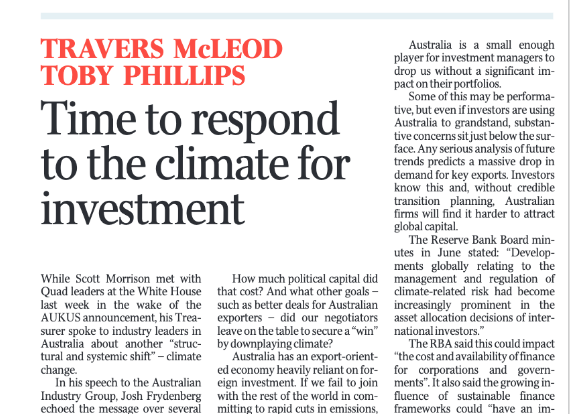When Professor Ross Garnaut suggested that hopes were slim for a
strong outcome from the Copenhagen round of climate negotiations,
America still had a climate change sceptic in the Whitehouse. While he
had at last been forced to pay lip service to climate science, his continued resistance to
any kind of binding international agreement made it hard to believe
that George Bush really thought the world was facing a serious problem.
In two and a half months the United States will have a President who
not only mentions global warming in every second sentence, but has
committed his party, and therefore his country, to cutting greenhouse gas emissions by 80% from 1990 levels by 2050.
When the Labor government ratified the Kyoto protocol last year,
many Australians breathed a sigh of relief that we were no longer
playing Smithers to America’s Montgomery Burns. But with Labor’s
as-yet-unaltered election promise of 60% cuts (from 2000 levels) by
2050, we may once again find ourselves dragging our feet compared to
other Western countries.
It’s also worth noting that the Obama campaign’s climate and energy
platform specifically pledged 100% auctioning of permits — a smart
move, as his administration now has a shiny new electoral mandate that
they can point to every time the lobbyists come a knockin’. Given
evidence that climate change was the single most important issue for
the swinging voters
who swung Labor’s way at the last election, it’s a shame that the ALP
didn’t provide itself with the same cover in its own platform.
With the Arctic sea-ice melting rapidly even an 80% target is too low
for a developed country like the US but it should give (there’s that
word again) hope to everyone in Australia who was disappointed by the
measly 5% cut by 2020 which Professor Garnaut recommended in the event
of the failure of the Copenhagen conference. Whichever way you cut it,
5% by 2020 doesn’t put us on the path to 80% by 2050. The US’s
international influence may be waning, but it is still a significant
emitter and its newly cooperative approach at Copenhagen should make a
big difference.
Yesterday’s election result also heralds the rise of Green Keynesianism. The US economy is in terrible shape and smart economists
are advocating direct investment over a more consumer-based fiscal
stimulus. Democrats in Congress got a head start last year with the Green Jobs Act, and elements of the President-elect’s energy and environment policies look a lot like a “Green New Deal”. This from Time Magazine:
He wants to launch an “Apollo project” to build a new
alternative-energy economy. His rationale for doing so includes some
hard truths about the current economic mess: “The engine of economic
growth for the past 20 years is not going to be there for the next 20.
That was consumer spending. Basically, we turbocharged this economy
based on cheap credit.”But the days of easy credit are over, Obama said, “because there is
too much deleveraging taking place, too much debt.” A new economic
turbocharger is going to have to be found, and “there is no better
potential driver that pervades all aspects of our economy than a new
energy economy … That’s going to be my No. 1 priority when I get into
office”.
Calls for a Green New Deal are also starting to gain traction in the UK — and the UN. This can only help the chances of Australia’s version of the Apollo alliance, which released the “Green Gold Rush” report last week calling for investment in green-collar jobs growth.
This piece was first published in Crikey on November 6, 2008



